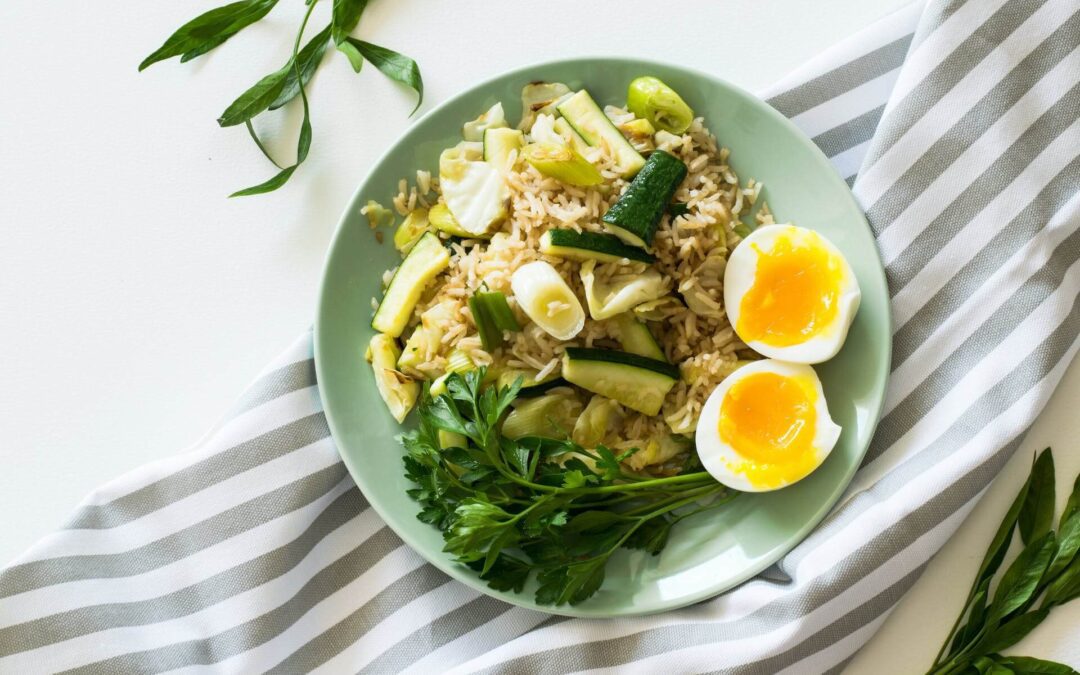Gluten is a protein in grains such as wheat, barley, and rye. It offers flexibility, helps the bread to rise, and imparts a chewy texture to dishes. (1, 2)
Although gluten is not a concern for most individuals, some may be sensitive to it.
Celiac disease is an autoimmune disorder that results from an immunological reaction to gluten. Eating gluten may produce symptoms such as bloating, diarrhea, and stomach discomfort in those who have this condition or non-celiac gluten sensitivity. (3)
Gluten is found in several of the most widely ingested cereals. There are, however, many healthful gluten-free grains available.
Here are eight very nutritious gluten-free grains.
1. Sorghum
Sorghum is often grown as both a cereal grain and an animal feed. It’s also used to make sorghum syrup, a sweetener, and various alcoholic drinks.
This gluten-free grain includes valuable plant chemicals that function as antioxidants, lowering your risk of chronic illness and reducing oxidative stress. (4)
Furthermore, sorghum is high in fiber, decreasing sugar absorption and stabilizing blood sugar levels.
One study evaluated blood sugar and insulin levels in 10 persons after eating a muffin prepared with sorghum flour or whole-wheat flour. The sorghum muffin reduced blood sugar and insulin levels more than the whole-wheat muffin. (5)
According to a 2010 test-tube and animal research, black sorghum bran has considerable anti-inflammatory capabilities owing to its high amount of these plant components. (6)
Sorghum includes 13 grams of fiber, 20 grams of protein, and 19% of the recommended requirement for iron in one cup (192 grams). (7)
Sorghum has a mild taste and may be turned into flour for gluten-free baking. It may also be used instead of barley in dishes such as mushroom-barley soup.
2. Quinoa
Quinoa has swiftly become one of the most popular gluten-free grains. It’s pretty adaptable and high in fiber and plant-based protein.
It’s also one of the healthiest grains, with a high antioxidant content that may help lower your risk of illness. (8)
Quinoa is also an excellent source of protein and one of the few plant foods considered a complete protein source.
While most plant meals are deficient in one or two essential amino acids, quinoa includes all eight. As a result, it is a great plant-based source of protein. (9)
One cup (185 g) of cooked quinoa has 8 g of protein and 5 g of fiber. It’s also high in micronutrients and meets a large portion of your daily magnesium, manganese, and phosphorus needs. (10)
Quinoa is an excellent gluten-free crusting and casserole component. Quinoa flour may also prepare pancakes, tortillas, and quick bread.
3. Oatmeal
Oats are pretty nutritious. They are also one of the most significant sources of oat beta-glucan, a form of soluble fiber with health benefits.
A meta-analysis of 28 trials showed that beta-glucan reduced both LDL (bad) and total cholesterol while not affecting HDL (good) cholesterol. (11)
Other research suggests that beta-glucan may decrease sugar absorption and reduce blood sugar and insulin levels. (12, 13)
One cup (81 g) of dried oats has 8 g of fiber and 11 g protein. It also contains a lot of magnesium, zinc, selenium, and thiamine (vitamin B1). (14)
Although oats are naturally gluten-free, several types of oats may contain minor quantities of gluten. When oats are collected and processed, they may get contaminated with gluten.
If you have celiac disease or gluten sensitivity, search for oats labeled as gluten-free.
Remember that a tiny percentage of celiac disease patients may be sensitive to avenin, a protein contained in oats. Gluten-free oats, on the other hand, should be OK for the vast majority of gluten-intolerant persons. (15)
The most common method to consume oats is in a hot bowl of oatmeal, but you can also add oats to pancakes, granola bars, or parfaits for added fiber and minerals.
4. Buckwheat
Buckwheat, despite its name, is a grain-like seed that is gluten-free and unrelated to wheat.
It contains a lot of antioxidants, including a lot of two particular types: rutin and quercetin. (16)
Some animal research has revealed that rutin may help improve Alzheimer’s disease symptoms. Quercetin, on the other hand, has been demonstrated to reduce inflammation and oxidative stress. (17, 18)
Buckwheat consumption may also help lessen certain risk factors for heart disease.
Buckwheat consumption was linked to decreased total and LDL (bad) cholesterol and a more excellent ratio of HDL (good) to total cholesterol in one research. (19)
Another research found that those who ate buckwheat had a decreased risk of high blood pressure, high cholesterol, and high blood sugar. (20)
One cup (168 g) of cooked buckwheat groats has 5 g of fiber and 6 g of protein and is high in magnesium, copper, and manganese. (21)
Try soba noodles produced from buckwheat as a gluten-free alternative to regular pasta. Buckwheat may also be used to give crunch to soups, salads, and even vegetarian burgers.
5. Amaranth
Amaranth has a long history as one of the primary foods of the Inca, Maya, and Aztec civilizations. Furthermore, it is a very nutritious grain with several health advantages. (22)
According to a 2014 test-tube research, the chemicals in amaranth inhibit inflammation by blocking the activation of a pathway that causes inflammation. (23)
Amaranth’s high fiber content may also help to reduce various risk factors for heart disease.
Indeed, one animal research discovered that amaranth seeds reduced both blood triglyceride and LDL (harmful) cholesterol levels. (24)
One cup (246 g) of cooked amaranth has 5 g of fiber and 9 g of protein. It also provides 29 percent of your daily iron requirements and is high in magnesium, phosphorus, and manganese. (25)
Amaranth may be used in place of other grains such as rice or couscous. Cooked and refrigerated amaranth may also be used as a thickening ingredient in soups, jellies, and sauces instead of cornstarch.
6. Teff
Teff is one of the world’s tiniest grains, but it’s potent.
Teff delivers a nutritional wallop despite having just one-hundredth the size of a wheat kernel.
Teff has a lot of protein, which may aid satiety, cravings, and metabolism. (26, 27)
It also provides a significant amount of your daily fiber requirements. Fiber is an essential dietary component linked to weight reduction, decreased hunger, and increased regularity. (28, 29)
Teff includes 10 grams of protein and 7 grams of fiber in one cup (252 grams). It also contains a lot of B vitamins, including thiamine. (30)
Try replacing teff for wheat flour in part or whole for gluten-free baking. Teff may also be added to chili and oatmeal or used to thicken recipes naturally.
7. Corn
Corn, often known as maize, is one of the most common gluten-free cereal grains.
Corn is high in fiber and increases in the carotenoids lutein and zeaxanthin, which are plant pigments that function as antioxidants. (31)
According to research, lutein and zeaxanthin may improve eye health by lowering the risk of cataracts and age-related macular degeneration, two leading causes of vision loss in older persons. (32)
According to one research, persons who consume a lot of carotenoids had a 43% reduced risk of age-related macular degeneration than those who don’t. (33)
One cup of sweet corn (149 grams) includes 4 grams of fiber and 5 grams of protein. It contains many pantothenic acids and is rich in vitamin B6, thiamine, and manganese. (34)
Corn may be boiled, grilled, or roasted to provide a nutritious side dish to a well-balanced dinner. Eat it straight off the cob or mix it into a salad, soup, or casserole.
8. Brown rice
Although brown and white rice are made from the exact grain, white rice has had the bran and germ removed during manufacturing.
As a result, brown rice contains more fiber and a higher concentration of many micronutrients, making it one of the healthiest gluten-free grains.
Both types of rice are gluten-free. However, studies suggest that substituting brown rice for white rice has additional health advantages.
Eating brown rice instead of white rice may lower your risk of diabetes, weight gain, and heart disease. (35, 36)
One cup of cooked brown rice (202 grams) includes 3 grams fiber and 6 grams of protein. It also meets a significant amount of your daily magnesium and selenium requirements. (37)
Brown rice is a tasty side dish, but it can also be mixed with veggies and a lean source of protein to form a substantial dinner.
Result in Bottom Line
Following a gluten-free diet might be difficult if you have celiac disease or gluten sensitivity.
However, there are several gluten-free alternatives to wheat available.
These healthy gluten-free grains may greatly help your health by supplying antioxidants and lowering your risk of illness.







0 Comments